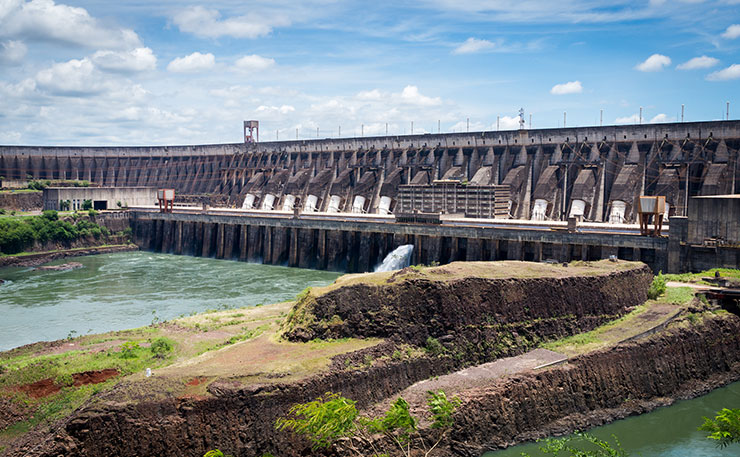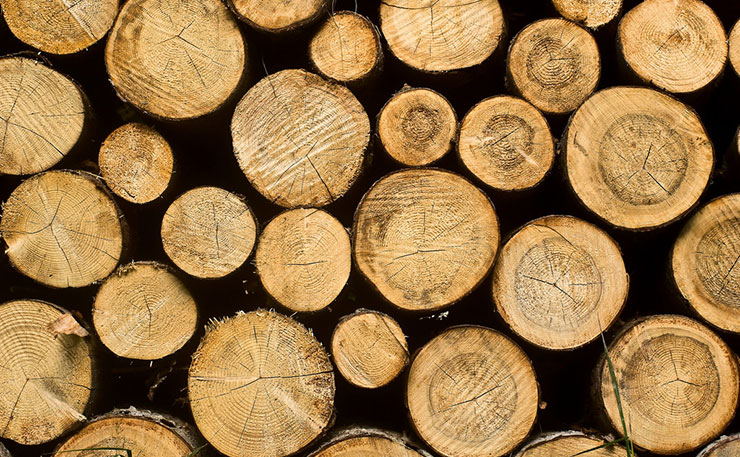Geoff Russell brings you the first of a three-part series on the global renewable energy revolution. The first article in the series will look mostly at the big sources of renewable energy; hydro and biofuel. Part II will look at wind and solar and consider Australia as a special case. Part III will consider alternatives.
Are renewables clean?
There was an interesting scientific paper published late last year called “How green is green energy?”. The last author named on many research papers is often the senior academic and mentor on a research project. In this case it is Bill Laurance; an international environmental protection giant. Go on, click the link and check him out.
So did you see Bill or lead author Luke Gibson on Q&A, Today Tonight, 7.30, The Drum, The Project or anywhere else talking about the paper? You can expect more papers like this as researchers get to work dissecting the renewable revolution. But you can also expect them to be studiously ignored by both mainstream and alt-anything media.
What do you think of when you hear about the rapid revolution in renewable energy? Probably solar panels, perhaps a wind turbine. That’s like thinking of skateboard accidents when someone mentions the road toll. Here’s a figure that puts the global renewable corporate vision into perspective.

In the real world, the renewable revolution is mostly about flooded valleys and burning biomass.
Who remembers the fight in Tasmania to save the Franklin and Gordon rivers from a 180 MW hydro-electricity project? In 1983 the battle culminated in a High Court decision that the river must not be dammed, lest it be damned. It will be the 35th anniversary of the decision in a few months. And my, how things have changed.
Hydro power
Hydro-electricity is typically claimed as renewable, despite flooded valleys being rather hard to restore. Hydro is a key component in Stanford Professor Mark Jacobson’s plans to power the US (and the planet) with water, wind, and sunshine. Jacobson’s work has been heavily criticised for unrealistic assumptions and even basic modelling errors… like postulating “just” 50 per cent more hydro power despite his own modelling output showing a need for 13 times more hydro power.
Regardless of the outcome of that scientific fight over modelling errors, the figure above makes it obvious that dam building has been booming in recent decades. There have, of course, been numerous local protests against dams, but the size of the global hydro industry is a good measure of their failure.
Hydro electricity outstrips solar by a factor of about 16, and wind by a factor over 4. The flooded river valleys that provide the reservoirs were once human homes or wildlife habitat, or both. They now cover some 340,000 square kilometres of the planet. That’s about 5 times the size of Tasmania.
But isn’t solar growing so fast that it will catch up? Not likely.
Hydro isn’t massive now, but there are huge expansion plans in the pipeline… sorry for the pun. I’ve been wrong about this in the past because I was ignoring developing countries. Developing countries are getting richer quicker, energy hungry and looking around for cheap power. The low cost of hydro schemes makes them irresistible to developing countries, just as they were in richer countries in days gone past.

In the Amazon basin, shared by the nine countries of Bolivia, Brazil, Ecuador, Colombia, Chile, Guyana, Peru, Suriname and Venezuela, there are some 192 dams operating already, with an additional 246 planned or under construction.
In South East Asia and Africa the future dam projects are even more numerous. Planned dams will change the mighty Mekong forever and Africa is moving in the same direction. In 2014, there were over 3,000 dams planned globally. The biggest hydro scheme on the planet is proposed for the Grand Inga falls in the Democratic Republic of Congo. Yes, that’s the same country where 40,000 children mine cobalt for the other great hope of renewable energy corporations, Lithium-ion batteries.
Biofuels and burning forests
Biofuels are even bigger again than hydro, by a factor of almost two. The biofuels referred to in the figure are mostly used to power motor vehicles rather than to produce electricity. But the current biofuel industry is still small. It used about three per cent of agricultural land to produce about five percent of fuel energy in 2015, and the EU is shooting for a doubling by 2020. Some have suggested that 440 million hectares could be used for biofuels by 2050.
In his 2015 book Power Density, Vaclav Smil estimated the land required to power the US entirely with renewables; not just to replace electricity but to replace liquid and gas fuels also. Handling electricity is the easy part, it’s growing crops for transport fuels which is the killer. Smil estimated that 4.6 million of the US’s 9.8 million square kilometres of land area would be required for fuel crops.
But won’t all vehicles be electric soon? Of the 1.2 billion vehicles on the planet only about 3 million are electric. And again, the electricity is easy compared to the required expansion of battery material mining and processing. A small car might weigh about a tonne or so; but the battery alone for a Tesla Model S is 540 kg.
Elon Musk’s giga-factory is producing about half a million batteries a year, having a capacity almost matching the rest of the global output of Lithium-ion batteries, but the global sale of motor vehicles is over 90 million per year. So a global electric vehicle fleet is a serious challenge for the global battery supply chain: mining, processing and distribution.
A Lithium-ion battery has about 8 times more cobalt than lithium and over half of the world’s cobalt comes from the People’s Democratic Republic of the Congo (where, as I mentioned, 40,000 children are occupied mining it – worth repeating). The DRC used to supply just one third of the world’s cobalt in 2008, but has tripled production in the past 10 years to increase its global share of the cobalt market. And she still has plenty more of both cobalt and children to fuel the renewable energy future. I’ll say a little more on this in Part II.
Most mathematical optimisation starts by determining feasible solutions to a problem and these are then submitted to further analysis. Infeasible solutions are just ignored. It’s hard enough implementing measures that will work, why waste time and energy on stuff which won’t?
Biofuels are either nowhere near low-emission enough (or actually increase emissions) to be feasible as a response to climate change and are totally incompatible with the need for massive reforestation that is necessarily part of our response.
Biofuels should never have got past the kind of basic screening that should be mandatory for any climate change response technology. Calling them renewable shouldn’t have fooled anybody, but it has fooled plenty of people for decades.

And the corporate renewable vision isn’t limited to burning crops to drive motor vehicles, it has the world’s forests in its sights for electricity. It’s easy to underestimate the habitat and wildlife impact of this industry, because we are typically focused on the electricity output, which is small, rather than the number of logged trees behind it, which is huge.
Drax used to be the UK’s largest coal-fired power station. It now runs half of its boilers on forests logged in the US, Canada and elsewhere. The forests are turned into pellets, loaded onto huge ships burning some of the filthiest fuel on the planet and delivered to the UK for burning.
The life cycle emissions of producing and transporting the pellets is about 388 grams per kWh of electricity produced. Such is the stupidity of the renewable bandwagon that this bizarre process earns Drax around $660 million annually in “green energy” subsidies. Drax reckons it’s burning about 6.5 million tonnes of forest per year in order to produce 12.7 terawatt hours of electricity.
In Germany, these pelletised forests are an even bigger deal. In 2017 they produced 47 terawatt hours of electricity, compared to 38 for solar power. I estimate the Germans are burning about 24 million tonnes of forest per annum.
Do the math. To match the annual hydro output of 4,000 terawatt-hours, you’d need to be burning about 2 billion tonnes of logs.
The wood pellet industry has long claimed to use timber waste. But as usage increases, this quickly becomes impossible. Drax itself says that only 2.6 million tonnes of the 6.5 million tonnes it uses come from sawmill residues.
Tomorrow is Part II… Wind, Solar, Storage and Australia. Find out about the US renewable energy plan which could kill 18 to 26 million bats a year.
Donate To New Matilda
New Matilda is a small, independent media outlet. We survive through reader contributions, and never losing a lawsuit. If you got something from this article, giving something back helps us to continue speaking truth to power. Every little bit counts.




